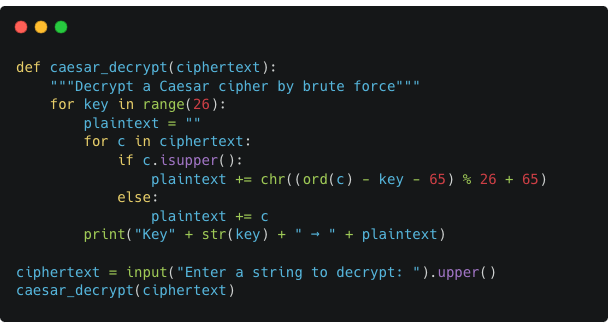Caesar Cipher
The Caesar Cipher a simple encryption technique used since the time of Roman Empire, named after Julius Caesar. It is a type of substitution cipher in which each letter in the alphabet is shifted by a certain number of positions down the alphabet.
The Caesar Cipher is suitable for beginners to learn about encryption, but it is not secure against modern decryption methods such as a brute force attack.
For example, a shift value of 4 would change the plaintext message "SEE YOU TONIGHT" to the ciphertext message “WII CSY XSRMKLX”. To decrypt the message, the process is simply reversed.
On this interactive page, you'll be able to see how this cipher works, trying it out for yourself, helping you understand how encryption can be used to keep messages secret.
In this seaction, there is an educational demonstration of a brute force attack - a method where all possible keys are systematically tested to decipher the encoded text. Simply input the encrypted message below, and witness the unraveling of all 26 potential keys to unveil the original plain text.
This web page uses Javascript to execute code everytime you type into the encrypted_text field on the page. If you would like to investigate how the code works, a Python version is provided below that will be more familiar to you.

Link: https://trinket.io/python/061181639c
Teaching Information
 Teaching the Caesar Cipher can be taught as an unplugged task using a set of rotating disks or a set of cards, known as a scytale, along with mini-white boards.
Teaching the Caesar Cipher can be taught as an unplugged task using a set of rotating disks or a set of cards, known as a scytale, along with mini-white boards.
This is the template I use for the printed Caesar Cipher wheels that work best on 280-300gsm card with 50x20mm split pins. However, if you do not have time or the materials for this, please feel free to use this online resource so that you can teach it without the assosicated printing and administration overheads.
The following BBC Bitesize page contains an excellent video that explains encryption in general terms. For KS3, start at the beginning and stop around the two minute mark.